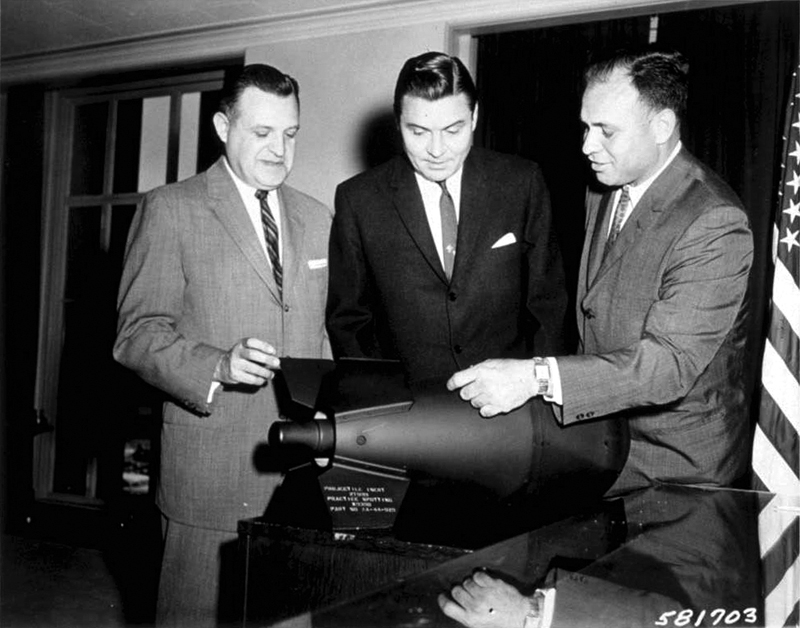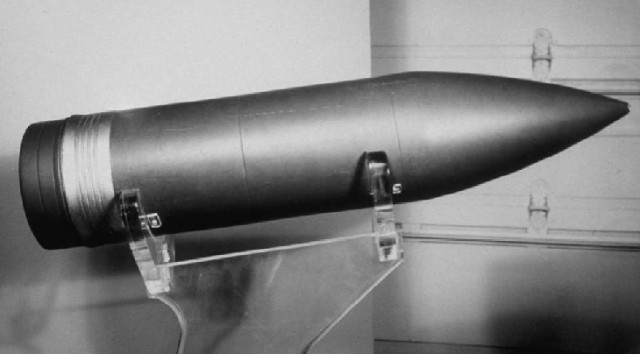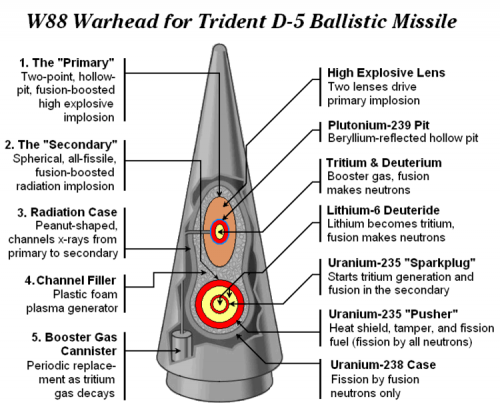chimeric oncogene
ACCESS: Secret
- Joined
- 23 May 2019
- Messages
- 347
- Reaction score
- 429
Most small-diameter nuclear artillery shells (e.g. W82, W79) use linear implosion to force a long cylinder/ovoid of plutonium into a spherical critical shape, allowing them to generate nuclear yields with very narrow weapons.
Linear implosion is generally understood to be less efficient (requiring >1 critical mass, ~13 kg, of plutonium) than spherical implosion, which compresses a sphere of plutonium to a critical configuration. The smallest spherical implosion bomb, the W54 Davy Crockett (and its higher-yielding derivatives), obtained a yield in the vicinity of 1-2kt in a package ~250-260mm across, presumably with less plutonium than a similar-yield W82 (155mm) or W79 (203mm) linear implosion bomb.
Modern MIRVs are believed to use ovoid (or even egg-shaped) spherical implosion weapons as primaries, in a bid to save space in the MIRV nosecone.
My question is thus: Is it possible to make a spherical implosion bomb (perhaps an ovoid or egg-shaped device) <203mm in diameter? Would this lower the cost of my 203mm artillery round? Would this increase the efficiency of use of expensive plutonium in my 203mm round?
I have a conceptual question: Do linear implosion weapons, ovoid spherical implosion weapons, and spherical implosion weapons exist on a continuum? Or are they completely different devices?
Commonsensically, it seems they should, so if you thicken the HE around a linear implosion weapon you can make more efficient use of your plutonium, and if you add even more HE you end up with an ovoid, and then eventually a sphere.
Linear implosion is generally understood to be less efficient (requiring >1 critical mass, ~13 kg, of plutonium) than spherical implosion, which compresses a sphere of plutonium to a critical configuration. The smallest spherical implosion bomb, the W54 Davy Crockett (and its higher-yielding derivatives), obtained a yield in the vicinity of 1-2kt in a package ~250-260mm across, presumably with less plutonium than a similar-yield W82 (155mm) or W79 (203mm) linear implosion bomb.
Modern MIRVs are believed to use ovoid (or even egg-shaped) spherical implosion weapons as primaries, in a bid to save space in the MIRV nosecone.
My question is thus: Is it possible to make a spherical implosion bomb (perhaps an ovoid or egg-shaped device) <203mm in diameter? Would this lower the cost of my 203mm artillery round? Would this increase the efficiency of use of expensive plutonium in my 203mm round?
I have a conceptual question: Do linear implosion weapons, ovoid spherical implosion weapons, and spherical implosion weapons exist on a continuum? Or are they completely different devices?
Commonsensically, it seems they should, so if you thicken the HE around a linear implosion weapon you can make more efficient use of your plutonium, and if you add even more HE you end up with an ovoid, and then eventually a sphere.



